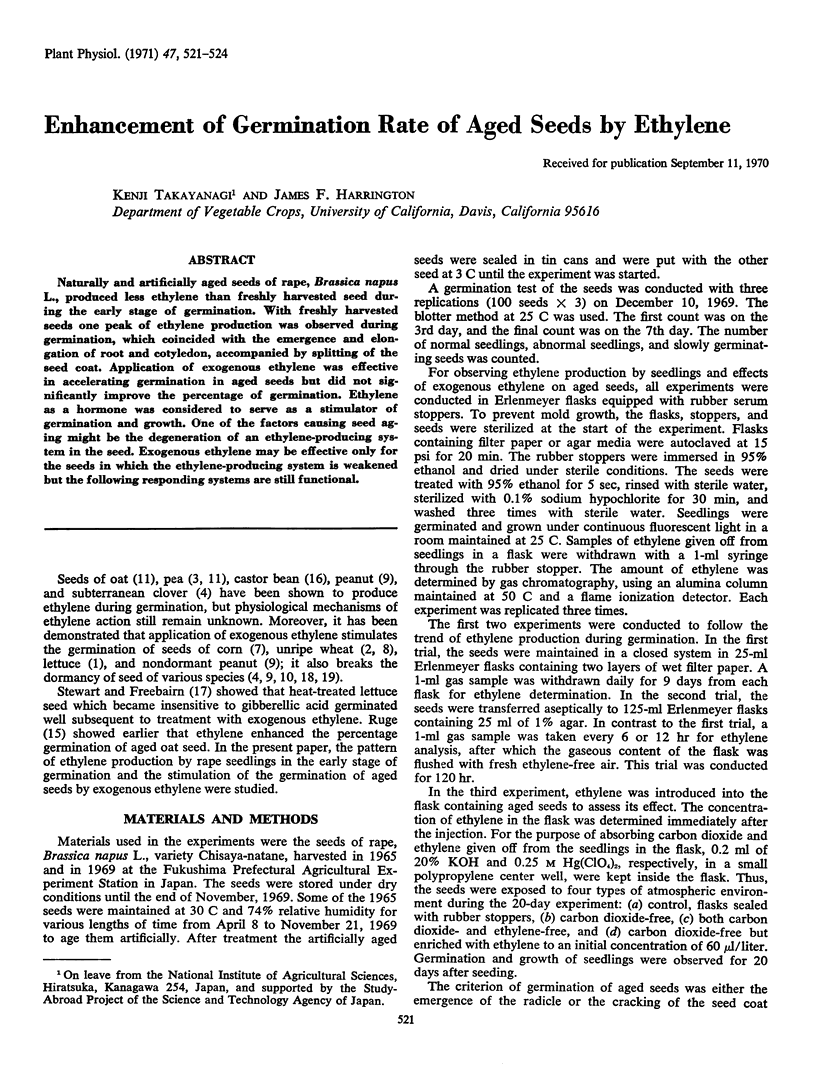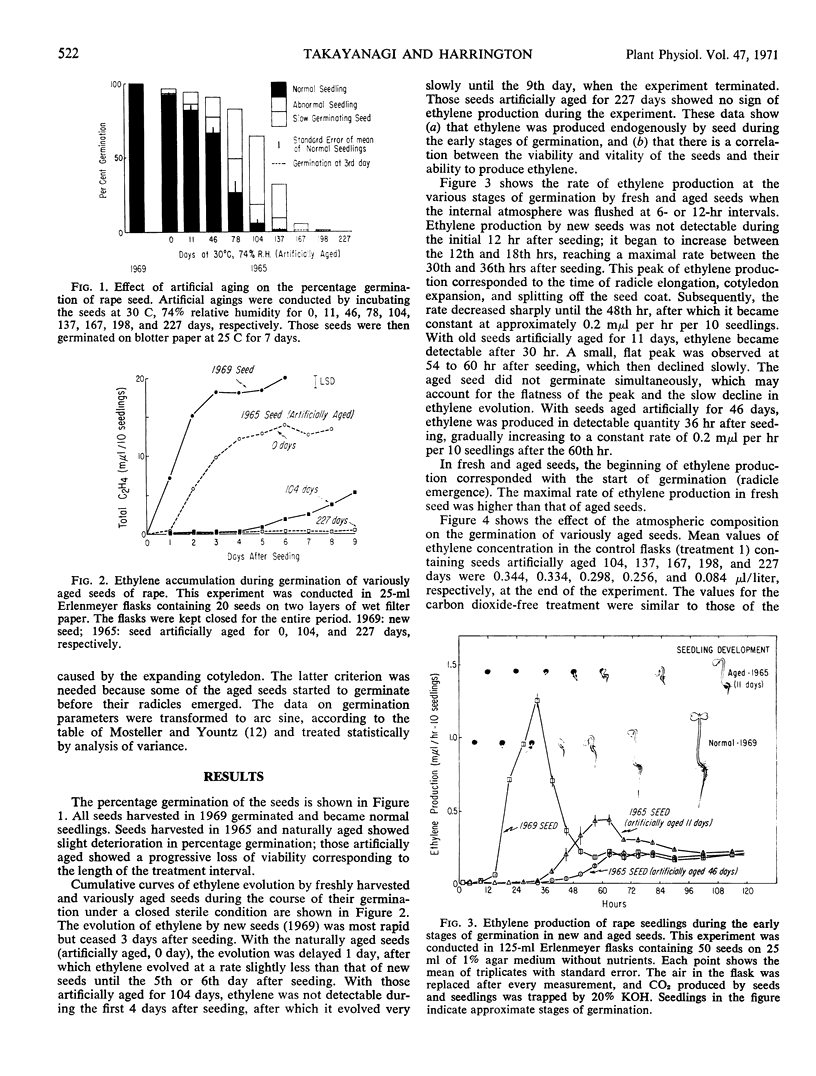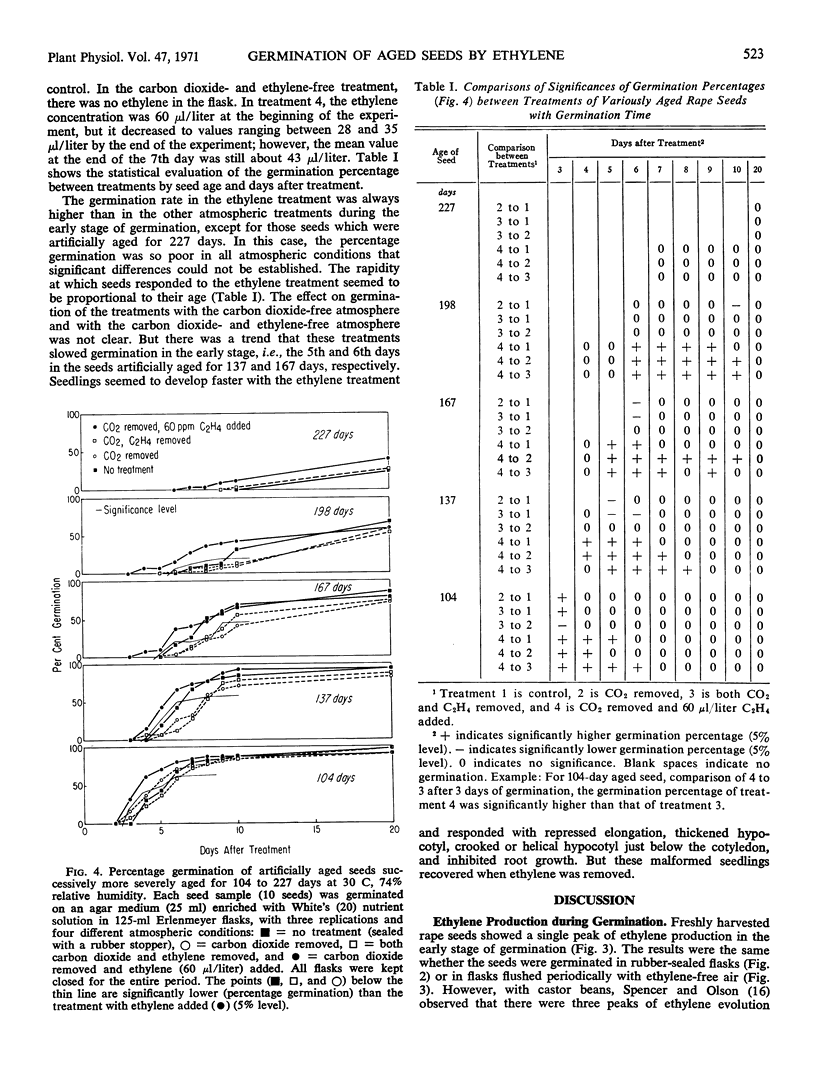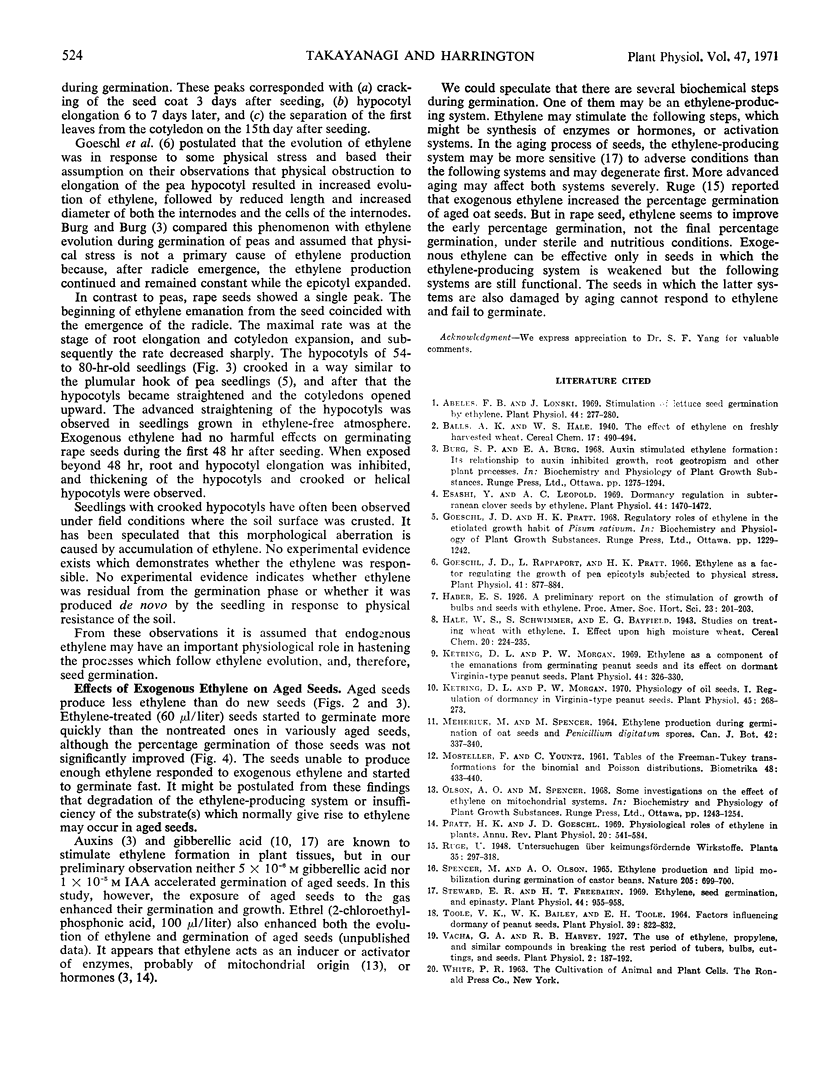Abstract
Naturally and artificially aged seeds of rape, Brassica napus L., produced less ethylene than freshly harvested seed during the early stage of germination. With freshly harvested seeds one peak of ethylene production was observed during germination, which coincided with the emergence and elongation of root and cotyledon, accompanied by splitting of the seed coat. Application of exogenous ethylene was effective in accelerating germination in aged seeds but did not significantly improve the percentage of germination. Ethylene as a hormone was considered to serve as a stimulator of germination and growth. One of the factors causing seed aging might be the degeneration of an ethylene-producing system in the seed. Exogenous ethylene may be effective only for the seeds in which the ethylene-producing system is weakened but the following responding systems are still functional.
Full text
PDF



Selected References
These references are in PubMed. This may not be the complete list of references from this article.
- Abeles F. B., Lonski J. Stimulation of lettuce seed germination by ethylene. Plant Physiol. 1969 Feb;44(2):277–280. doi: 10.1104/pp.44.2.277. [DOI] [PMC free article] [PubMed] [Google Scholar]
- Esashi Y., Leopold A. C. Dormancy regulation in subterranean clover seeds by ethylene. Plant Physiol. 1969 Oct;44(10):1470–1472. doi: 10.1104/pp.44.10.1470. [DOI] [PMC free article] [PubMed] [Google Scholar]
- Goeschl J. D., Rappaport L., Pratt H. K. Ethylene as a factor regulating the growth of pea epicotyls subjected to physical stress. Plant Physiol. 1966 May;41(5):877–884. doi: 10.1104/pp.41.5.877. [DOI] [PMC free article] [PubMed] [Google Scholar]
- Ketring D. L., Morgan P. W. Ethylene as a Component of the Emanations From Germinating Peanut Seeds and Its Effect on Dormant Virginia-type Seeds. Plant Physiol. 1969 Mar;44(3):326–330. doi: 10.1104/pp.44.3.326. [DOI] [PMC free article] [PubMed] [Google Scholar]
- Ketring D. L., Morgan P. W. Physiology of oil seeds: I. Regulation of dormancy in virginia-type peanut seeds. Plant Physiol. 1970 Mar;45(3):268–272. doi: 10.1104/pp.45.3.268. [DOI] [PMC free article] [PubMed] [Google Scholar]
- SPENCER M., OLSON A. O. ETHYLENE PRODUCTION AND LIPID MOBILIZATION DURING GERMINATION OF CASTOR BEANS. Nature. 1965 Feb 13;205:699–700. doi: 10.1038/205699a0. [DOI] [PubMed] [Google Scholar]
- Stewart E. R., Freebairn H. T. Ethylene, seed germination, and epinasty. Plant Physiol. 1969 Jul;44(7):955–958. doi: 10.1104/pp.44.7.955. [DOI] [PMC free article] [PubMed] [Google Scholar]
- Toole V. K., Bailey W. K., Toole E. H. Factors Influencing Dormancy of Peanut Seeds. Plant Physiol. 1964 Sep;39(5):822–832. doi: 10.1104/pp.39.5.822. [DOI] [PMC free article] [PubMed] [Google Scholar]
- Vacha G. A., Harvey R. B. THE USE OF ETHYLENE, PROPYLENE, AND SIMILAR COMPOUNDS IN BREAKING THE REST PERIOD OF TUBERS, BULBS, CUTTINGS, AND SEEDS. Plant Physiol. 1927 Apr;2(2):187–193. doi: 10.1104/pp.2.2.187. [DOI] [PMC free article] [PubMed] [Google Scholar]


